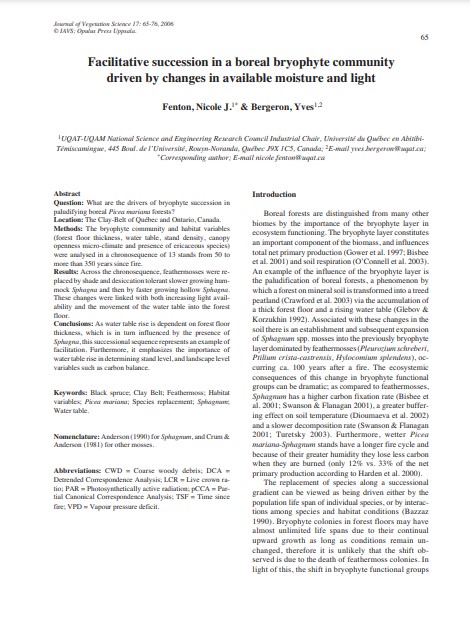Facilitative Succession in a Boreal Bryophyte Community Driven by Changes in Available Moisture and Light
Bosque Modelo:
Lake Abitibi
Temática:
Restauración
Tipo de documento:
Artículo científico
Resumen
Question: What are the drivers of bryophyte succession in paludifying boreal Picea mariana forests?
Location: The Clay-Belt of Québec and Ontario, Canada.
Methods: The bryophyte community and habitat variables (forest floor thickness, water table, stand density, canopy openness micro-climate and presence of ericaceous species) were analysed in a chronosequence of 13 stands from 50 to more than 350 years since fire.
Results: Across the chronosequence, feathermosses were replaced by shade and desiccation tolerant slower growing hummock Sphagna and then by faster growing hollow Sphagna. These changes were linked with both increasing light availability and the movement of the water table into the forest floor.
Conclusions: As water table rise is dependent on forest floor thickness, which is in turn influenced by the presence of Sphagna, this successional sequence represents an example of facilitation. Furthermore, it emphasizes the importance of water table rise in determining stand level, and landscape level variables such as carbon balance.
Información Bibliográfica
Autor:
Fenton, NJ and Y Bergeron.
Revista:
Journal of Vegetation Science
Año:
2006
N°:
-
País :
Canadá
Páginas:
65 - 76
Volumen:
17
Idioma:
Ingles
Palabras claves
Black spruce; Clay Belt; Feathermoss; Habitat variables; Picea mariana; Species replacement; Sphagnum; Water table.





